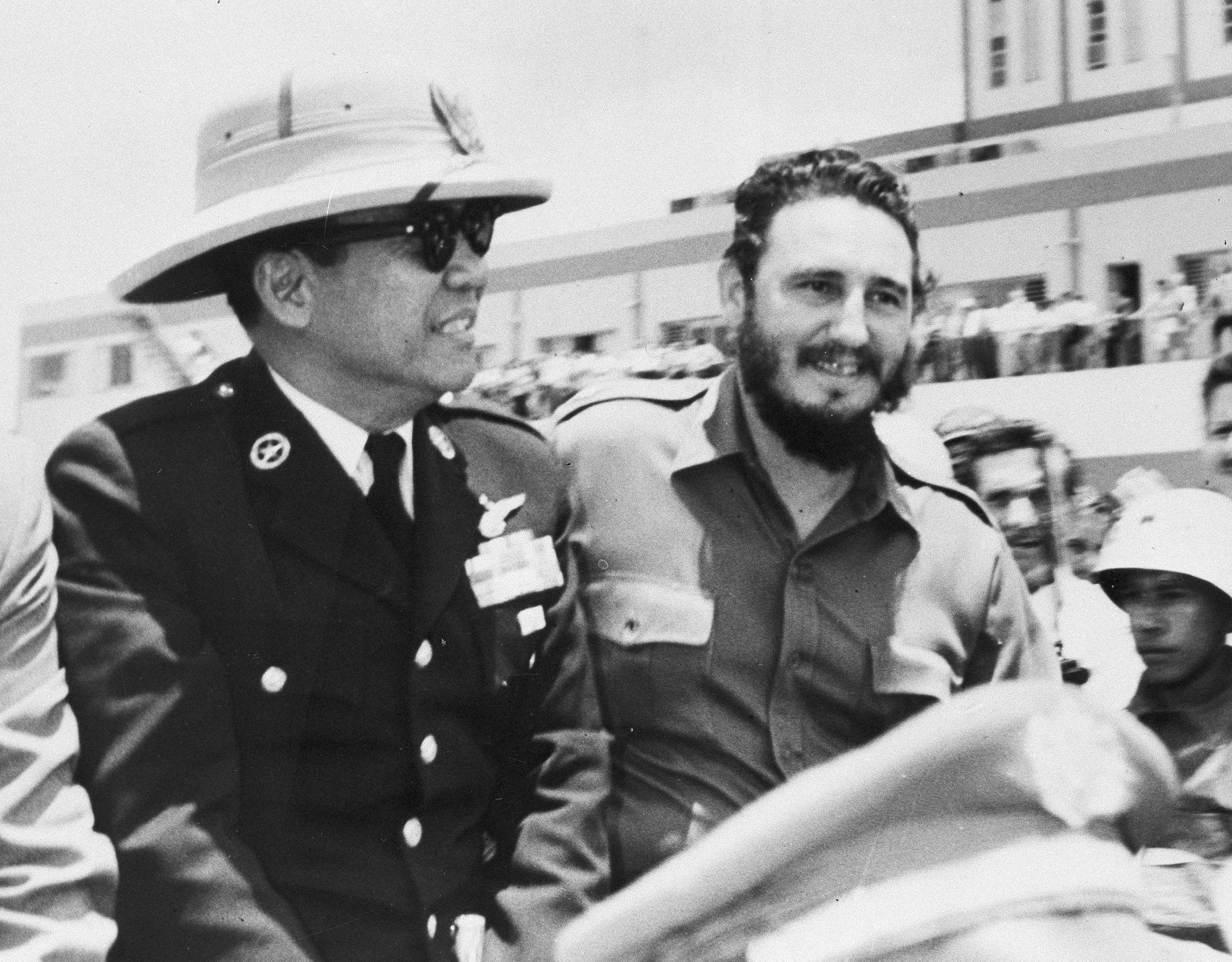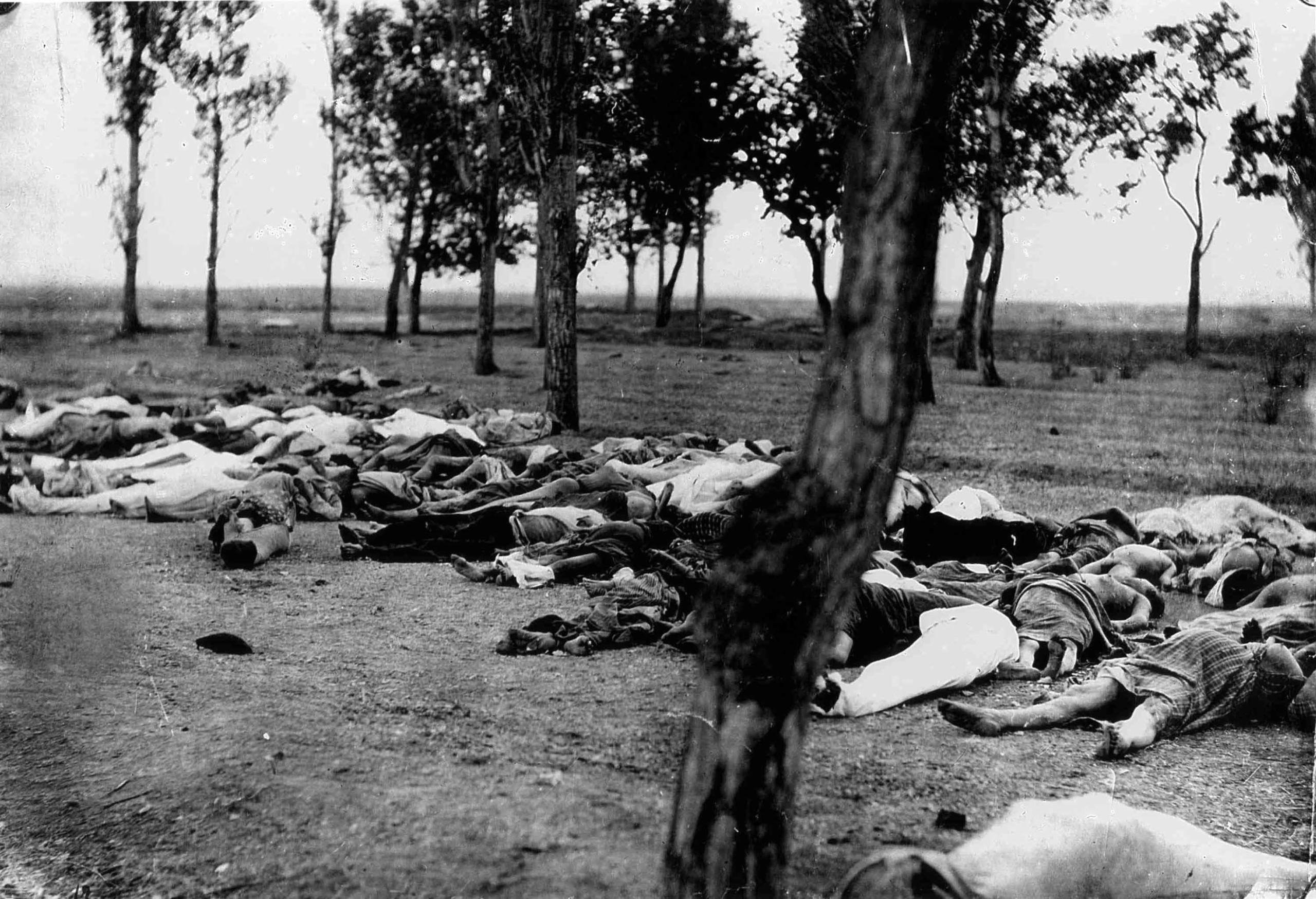Today the “news” are the massacre the world forgot. Exactly 50 years ago, from October 1965 and throughout 1966, one of the most brutal blood baths of the Cold War unfolded. Between 500,000 and 1.5 million communists and alleged communists (nobody knows the exact number) were slaughtered in dreadful ways by paramilitary groups and the Indonesian army.
On top of that, one million people were imprisoned without charge or trial.
They were systematically tortured and abused. This was one of the biggest massacres after the Second World War, but also the one with the least attention drawn to it, although the number of killed was level with Rwanda in 1994.
Colonial domination
Over the centuries, many have been attracted by Indonesia’s rich natural resources. Debarking in the islands in 1596, the Dutch were however the ones to achieve dominating influence in the country. While the Portuguese were left with Timor-Leste, the Dutch tightened their grip around the archipelago. Indonesia became a typical colony with plantations and large export of raw materials to Europe.

The Japanese occupation under the Second World War was brutal. They pillaged the country and sent half a million men as slaves to Burma and Malaysia.
The Japanese occupation under the Second World War was brutal. They pillaged the country and sent half a million men as slaves to Burma and Malaysia. After the war, the Dutch were not very willing to let go of Indonesia, although the country declared its independence 17 August 1945. After military clashes, negotiations and international pressure, they were able to raise the red and white flag 27 December 1949.
Following the Japanese defeat in 1945, Burma (British), Malaysia (British), the Philippines (American) and Indonesia (Dutch) were at the brink of achieving full independence. The communists held a strong position in all these countries because of their devoted resistance, both against the colonial rule and the Japanese occupation. Their dilemma was whether to be subordinated to the traditional nationalists in broad political fronts, or organise a united communist-led front.
1948: Rebellion
In 1948, while the fight for independence was still on-going, PKI (Partai Komunis Indonesia) led a rebellion in the East Java city Madium. The rebellion, perceived by many as a national betrayal, isolated the party and sharpened the opposing views of those wanting a parliamentary road to socialism through broad alliances and those supporting a military solution. After the Madium rebellion, PKI began prioritising the first.
The party grew from about 100,000 members in 1951, to one million in 1961, and when the generals seized power 2 October 1965, it counted a total of three million members. In addition, the party had 20 million supporters through unions, farmers’ organisations, and youth and women’s movements. By playing the nationalist card prior to the Marxist one, and emphasising parliamentary work prior to violence, the party expanded.
Having led the fight for independence against the Dutch colonial power, President Sukarno began collaborating with parts of the army and PKI, in order to balance the interests of the economic and military elite and the risk of widespread social instability.
On the outside, Sukarno still appeared to be an anti-imperialist and a man of the people, and in the beginning of the 1960s, USA watched the collaboration between a “leftist” president and an expanding communist party in the most populated country in Southeast-Asia with great unease. This was during the Cold War, and at the beginning of the US escalation in Vietnam. The American, British, Australian and Dutch governments were deeply concerned about the risk of letting a country rich in natural resources and strategically important such as Indonesia fall into communist hands.
The American, British, Australian and Dutch governments were deeply concerned about the risk of letting a country rich in natural resources and strategically important such as Indonesia fall into communist hands.
1965: Beginning of blood bath
30 September 1965, six generals of the Indonesian army were killed by a small group of officers and members of PKI. The army, under the leadership of General Suharto, perceived the assassination as an attempted coup, and struck back with great force. Historians do not agree on the background for the attack, and the theories are many. Was it about an internal settlement in the army, or was it some officers’ failed attempted coup conducted with support from a few members of the communist party? Or, was it a calculated prelude to a successful coup by one of the few remaining generals, namely Suharto?
What we do know, is that the army put all the blame on the communists, and started a massacre we still do not know the full extent of. What is also clear is that in March 1966, General Suharto managed to overthrow President Sukarno, implementing a military dictatorship that lasted until he was forced to resign 21 May 1998.
The large scope of the grotesque abuses makes the complete silence about what happened intolerable and frightening. Scattered around in Indonesia there are still thousands of unopened mass graves. The Army, the economic elite and fanatic Muslim groups created an orgie of violence that would make other American supported dictators of the time appear gentle in comparison, such as Mobutu Sese Seko in Zaire (DRC) and Pinochet.
In the aftermaths, former CIA officials have come forward and stated that the US supported Suharto with intelligence, providing the army executioners with “death lists”. Being a member of the communist party was sufficient to have your name on the list.
In the aftermaths, former CIA officials have come forward and stated that the US supported Suharto with intelligence, providing the army executioners with “death lists”. Being a member of the communist party was sufficient to have your name on the list.

The West takes over
The Indonesian “leftist” foreign politics were quickly put to an end, and western-inspired economic politics were implemented.
In 1967, what was left of the communist party tried to establish a base in central and eastern areas of Java, where they planned a guerrilla war against the army. The party was diminished, however, and not prepared for armed conflict. The establishing of Tentara Pembebasan Rakyat (The People’s Liberation Army) in the base area Blitar Selatan led to conflict with a local militia, and the army was able to quickly crush the attempt to forming a guerrilla movement.
Being the largest communist party outside the Soviet Union and China at the time, PKI had grown extremely fast, and had, as a party of the masses, put less effort into organisational measures such as violence response. Also, PKI was first and foremost a party with deep roots in Java, and it failed at reaching people through the ethnic, religious, and regional ties of solidarity which were strong other places in Indonesia. In addition, the party fell out with the strong Muslim societies in Java and other places, and this made their attempt to form guerrilla fronts in the villages impossible. PKI was strong, but at the same time isolated in the very pluralistic society of Indonesia.
Silence and lies
The mass executions, the horrible abuses, the concealment and the support from several western governments long constituted a black hole of history. Until the dictator’s resignation, all Indonesian children had to watch General Suharto’s notorious propaganda film about what happened in 1965.
...in four months, five times as many people died in Indonesia as in Vietnam in twelve years.
BERTRAND RUSSELL, 1966
The older generation of Indonesia still suffers from trauma. Hundreds of thousands of voices have not been heard. According to Professor Saskia E. Wieringa at the University of Amsterdam, Indonesian students attending a seminar in Aachen in Germany in 2014 were shocked when learning information about the coup in 1965 they until then were not aware of. Their reactions were strong when they understood the amount of lies they had been told over the years. When informed students such as these did not know, then what about the rest of the population? What do they know? The victims, those who are still alive, are too afraid to tell their story. They have never received a proper treatment as victims, on the contrary, many have been stigmatised until their death.
In November 2012, the Indonesian human rights organisation National Commission on Human Rights (Komisi Nasional Hak Asasi Manusia) published a shocking report documenting in detail crimes against humanity committed after October 1965. The Indonesian minister of justice refused the report, and until this day, no investigation has been initiated.
(RICHARD SKRETTEBERG is Senior Adviser in Norwegian Refugee Council.)


